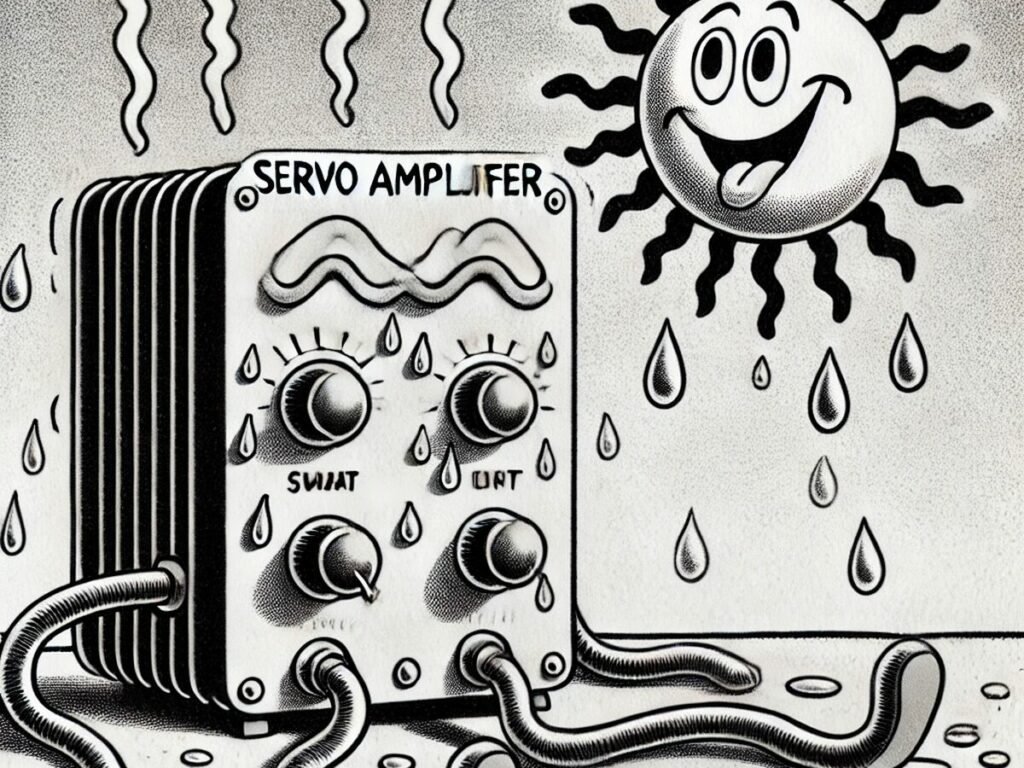Servo amplifiers are critical components in motion control systems. They translate low-power control signals into the high-power outputs needed to drive servo motors. To ensure long-term performance, efficiency, and reliability, maintaining the optimal operational temperature of these devices is essential. This article explores the importance of temperature management for servo amplifiers, the ideal operating range, and strategies to mitigate thermal issues.
Read more: Optimal Operation Temperatures for Servo AmplifiersWhy Temperature Matters
Servo amplifiers generate heat during operation due to electrical resistance and power conversion processes. Excessive heat can lead to reduced efficiency, shorter lifespan, and system failure.
Reduced Efficiency
High temperatures can increase resistance which in turn reduces the operational efficiency of your system.
Shorter Lifespan
Extreme heat accelerates wear on components like capacitors and transistors. This reduces the overall operational lifespan of equipment.
System Failure
Overheating can trigger thermal shutdowns or cause permanent damage to the amplifier.
Operational Temperature Range

Manufacturers typically specify an optimal temperature range for their servo amplifiers, often between 0°C and 50°C (32°F to 122°F). However, the exact range can vary based on the design, application, and environment. Maintaining devices within this range ensures the performance, reliability, and longevity of your equipment. Be sure to consult your owners manual regarding operational temperatures.
Factors Influencing Operational Temperatures
- Environmental Conditions:
- Ambient temperature plays a significant role in how well a servo amplifier dissipates heat.
- Humidity and dust can further impact thermal performance by reducing the effectiveness of heat dissipation mechanisms.
- Load and Duty Cycle:
- Continuous or high-power operation generates more heat compared to intermittent or low-power use.
- Applications requiring frequent acceleration and deceleration add to thermal stress.
- Ventilation and Cooling:
- Insufficient airflow or obstructed ventilation can trap heat, leading to overheating.
- Cooling mechanisms, such as heat sinks or fans, are critical in maintaining temperatures within the acceptable range.
- Design and Materials:
High-quality materials and advanced designs often have better heat tolerance and dissipation capabilities.
Managing Servo Amplifier Temperatures
To ensure servo amplifiers remain within their optimal temperature range, consider the following best practices:
- Monitor Temperatures:
- Use built-in thermal sensors or external monitoring systems to track operating temperatures in real-time.
- Ensure Adequate Ventilation:
- Install servo amplifiers in locations with sufficient airflow.
- Keep ventilation ports clear of dust and debris.
- Implement Active Cooling:
- Use fans or air conditioning systems for environments with high ambient temperatures.
- In some cases, liquid cooling may be required for high-power applications.
- Optimize Load Profiles:
- Avoid overloading the servo amplifier by ensuring the motor and amplifier are properly matched.
- Design the motion profile to minimize unnecessary stress.
- Regular Maintenance:
- Clean and inspect the servo amplifier regularly to remove dust and ensure all cooling mechanisms function properly.
- Replace aging components that may impact thermal performance.
Conclusion
Maintaining servo amplifiers within their optimal operational temperatures is crucial for performance, reliability, and longevity. By understanding the factors that influence temperature and implementing effective thermal management strategies, operators can maximize the value and efficiency of their motion control systems. Proper installation, monitoring, and maintenance are key to keeping these vital components running smoothly in any application.
You read more about the basics of servo amplifiers here.
Overheated Amplifier Needs Replacing?
Do you have a servo amplifier that’s overheated and in need of replacement? Reach out to our team and let’s get your operations back up and running! Email us: sales@mroelectric.com or call: (800) 691-8511.
Updated on July 31, 2025 by Ken Cheng



